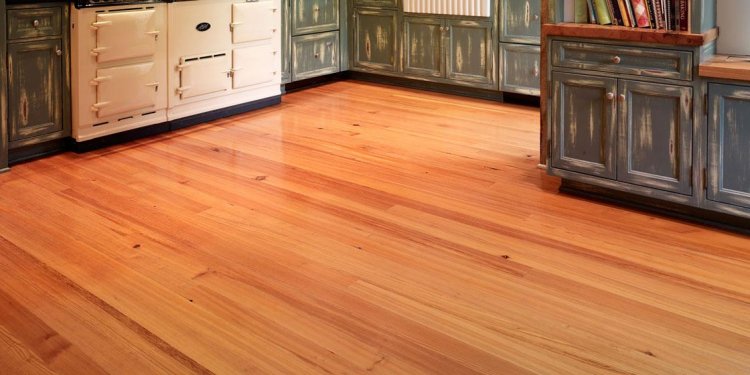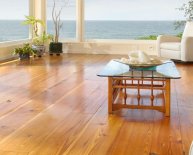
Antique Heart Pine Flooring prices
- Average highest cost: $25 per square foot
- Average lowest cost: $5 per square foot
In some cases, antique heart pine may be available. This tends to cost as much as high-quality, fresh pine flooring, despite being reclaimed in its own way. Antique heart pine is chosen for its patina and character, and priced accordingly. Better-looking pine that has been used and aged will cost more.
This does not include the cost of installation or the clear coat. However, pine flooring tends to be less expensive than similar wood brands because it does not require staining in the same way other floors do. The staining process tends to add a lot of cost per square foot to wooden floor costs in general, so being able to skip this makes pine flooring a much more affordable proposition.
Materials
Heart pine is distinguished from sapwood. It comes from the deepest parts of the pine tree and is selected for its depth of color and relative durability. The deeper woods of a pine tree are darker, carrying a red or gold tint to them, and this is why heart pine doesn't require stain in the same way other wooden floors such as oak or birch do.
There is a considerable difference between fresh boards cut for heart pine flooring and from reclaimed boards. Reclaimed boards were cut to fit a different floor space. There may be considerable disparity or irregularity in a floor made of reclaimed heart pine if the room to be floored is larger than the room that was originally floored.
Reclaimed heart pine is distinct from fresh heart pine for its "character." Character in a floor is defined as the patina of natural scratches and stress it acquires through use over the years. Pine is specially noted to compress and compact in a favorable way, giving it a more aged, antique look instead of simply making it look worn out. Fresh heart pine will develop this character over the course of years of use, but reclaimed heart pine floors come with this from the outset. This is why it can sometimes be considered higher quality, despite being a recycled flooring material.
Advantages and Disadvantages
Advantages include:
- Ages well
- Doesn't require stain
- Very easy to fin
- Raises the value of a home
Heart pine ages very well over the course of years. As a character wood, the wear that the floor receives is thought to improve its aesthetics. This makes it ideal to install sooner, rather than later. This also makes it a very sound investment. Individuals who install heart pine floors can feel confident that the floor they have installed will last the lifespan of their home.
Most wooden flooring requires some kind of stain, followed by a clear coat to help seal it against water damage. Heart pine already has a rich red or golden color. This means that staining it is a purely optional exercise, and it is one most homeowners choose to forgo in favor of the natural look of pine. This makes it significantly easier to install, compared to other forms of flooring as it only requires the sealing clear coat.
Heart pine flooring is extremely easy to find on the market. Pine has long been a very available form of wooden flooring, and its popularity has never died down. This holds true of heart pine as well. In addition to being easy to acquire, fresh, heart pine is frequently reclaimed from homes as they are torn down. This keeps a lot of different options open to homeowners looking for materials, and it allows contractors to offer standard heart pine floors from freshly-manufactured supplies as well as high-quality antique floors from reclamation projects.
Installing heart pine can considerably raise the value of a home. Because it ages well, it's very attractive to see for homeowners looking for a long-term purchase. It also appreciates in value over time as it develops character, making it an excellent investment.
Disadvantages include:
- Vulnerable to dents and gouges
- Requires upkeep
- Susceptible to water damage and stains
- Vulnerable to sun bleaching
Heart pine is not without its disadvantages. The first is that it is more vulnerable to denting and gouging than other floors. Heart pine is a softer wood than oak or birch. This makes it easier to damage in this way. This can be less of a concern in hallways or kitchens where minimal furniture is used, but it remains a concern anywhere else in a home.
While heart pine does not usually require a coat of stain, it does need upkeep of its clear coat. This is true of most hardwood floors, but the denting and gouging that can be caused by furniture will wear a clear coat out faster in a heart pine floor. This means it will require more upkeep than similar floors to preserve its integrity.
Heart pine is susceptible to water damage and stains. This is true of all wooden floors, but the possibility of damage to the clear coat and the more porous nature of pine make the prospect of water damage or staining a much more serious one. Stains and water damage can penetrate pine wood more deeply than they can other flooring materials, making them harder to sand out and resurface.
Finally, heart pine is disadvantaged in that it is somewhat more vulnerable to sun bleaching than other woods. It carries its own rich color, which means it is rarely stained. Wood stains tend to be less susceptible to sunlight than natural wood, which is part of why they are popular. This can make heart pine less suitable for rooms that receive a lot of direct sunlight.

















